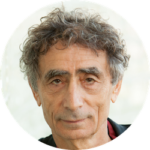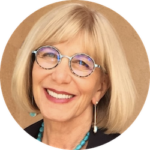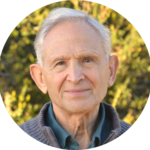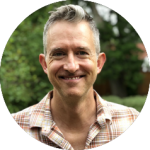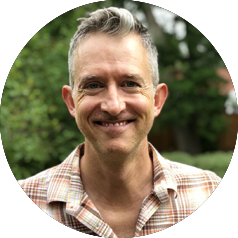Insights from One of America’s First Yoga Gurus – Yogi Amrit Desai – HPP 79
Throughout human history, we have always had a desire to achieve wellness and fulfillment in all aspects of daily life. The ancients may have already uncovered the secret by developing practices and rituals that involve conditioning the body and the mind, and incorporating the spiritual component.
With the impact and extent of damage that trauma, PTSD, anxiety and other similar disorders bring in our lives, what benefits do these practices offer? As providers, could Yoga really be a potent alternative treatment for our patients who are tremendously struggling?
In today’s interesting episode, we are honored to have one of the first to bring the teachings and practices of Ashtanga Yoga into the West, founder of the Amrit Yoga Institute, Gurudev Shri Amritji (Yogi Amrit Desai). We share fascinating conversations all around wellness, fulfillment, the ego, meditation and spiritual awakening through Yoga.
Show Notes:
A Passion For Yoga – 03:07
“So his teachings were so powerful, and so impactful. In my young days, I was only 16. And I was very deeply touched and impressed by the knowledge that he was revealing about Yoga”
A Destined Teacher – 04:36
“Then I had a wonderful job as an artist designer, and then from 1966, I decided to give up my professional career because my yoga students were growing everywhere. And they wanted me to teach Yoga”
Sharing An Awakening Experience – 08:38
“it was the experience of meditation in motion, where suddenly my body was entering into different postures prompted by the inner impulses, rather than the mind telling the body what to do. In yoga, it is called Prana awakening. So that experience was so profound and life changing”
Evoking A Memory – 11:05
“So because memory is there, because it was reactively perceived process experiences, that are built into the memory that means it is personal creation, out of the impersonal reality. So that means every time people look through there, whenever you are in interaction with yourself, or others of the world, you are acting out of your memories, meaning memories are built by reacting to what is present”
The Ego: Peel Off The Layers – 16:16
“Yoga means peeling each layer, every day, every time you remove your reactive perception into carnage, into meditative interaction, you are peeling the layers of the conditioned memories of the past. And with each layer, you remove the light of consciousness hidden behind it shines progressively brighter”
Man’s Creation: A Perspective On Good Versus Evil – 18:23
“So God, the Creator is whole, and is undivided whole. There exists nothing like good or evil, heaven or hell. But when man separated from the whole and reacted to the presence that God is, it divided the presence into I like it, I don’t like it. You are for me, you are against me”
Understanding Enlightenment – 20:10
“So when you remove all the memories that are distorting your perception of reality of the being, the light of being that I am, when you remove that you are enlightened, miss lighten, you are light from within. And the light is just not choosing for or against, it just shines everywhere equally”
Full Episode Transcript
SPEAKERS
Keith Kurlander, Dr. Will Van Derveer, Guru Yogi Amrit Desai
Yogi Amrit Desai 00:01
It operates through the medium of the mind in the dimension of time that is individual creation. Everything that the ego mind creates individually, in its interaction with reality is called karma, personal creation.
Keith Kurlander 00:21
Thank you for joining us for the higher practice podcast. I’m Keith Kurlander with Dr. Will Van Derveer. And this is the podcast where we explore what it takes to achieve optimal mental health. Hi there, welcome back. Today we have a very interesting guest. His name is Yogi Amrit Desai and his students call him Guru Dev. And he is really one of the first individuals to bring Asana practice. So postures in yoga, and you know how to move through yoga flow to this country in America, in the 60s and early 70s. He’s also one of my first teachers. And I met guru Dev, almost 25 years ago, and in an auspicious way, and learned quite a bit from him in my early 20s and really got introduced to yoga, and the inner dimensions of yoga and the spiritual dimensions of yoga, and how it can help us with our minds and wellness and fulfillment and joy and balance in our lives. So I’m excited to introduce Yogi Amrit Desai. He’s one of the earliest yoga gurus who brought yoga to the west in 1960. He has been repeatedly honored by world renowned authorities and organizations for bringing the inner dimension of Patanjali’s Ashtanga Yoga to the west. His teachings have ignited the fire that began the initial renaissance of the inner dimension of yoga in the 20th century. Over the last 60 years, Swami Shri has founded some of the largest yoga centers and health centers in North America. Amritji currently resides at the Amrit Yoga Institute, an internationally recognized training and Wellness Center in Salt Springs, Florida. Today, Amritji continues to share the ancient depths, hidden meanings and modern applications of the authentic yoga roots from which he began. Thousands of I Am Yoga, I Am Yoga Nidra and I Am Yoga therapy teachers have been trained in the modalities he developed worldwide. Some of his many awards include the doctor of yoga science award Vishwa Yoga Ratna, presented by the President of India and international yoga Grandmaster and nominated for the Padma Vibhushan Nomination by the ex Prime Minister of India, Shri Chandra Shekhar. Let’s welcome Guru Dev Amritji to the show. Hi, Gurudev Welcome to the show.
Yogi Amrit Desai 03:04
Thank you. It’s nice to be with you, Keith.
Keith Kurlander 03:07
Yeah, it’s good to see you again. So I met you when I was at a time when I was 22 in my life, and I was asking for a yoga teacher to appear in my life and I knew no one where I lived. I was in Vermont. And there were no yoga teachers anywhere around and I happen to start asking for a teacher, then you showed up sort of on my doorstep in Vermont. But my question for you here is just if you could tell us a little bit about how you met your teacher Bapuji and how that happened? I think it’s a good starting point. Were you wanting to learn yoga? Or you know, how did that happen?
Yogi Amrit Desai 03:44
So I was very young when my guru came to my hometown. And he was giving talks on yoga or Bhagavad Gita. So his teachings were so powerful, and so impactful. In my young days, I was only 16. And I was very deeply touched and impressed by the knowledge that he was revealing about yoga. So I became very much attracted to him. And I didn’t know he was my guru until I became very close to him. And he became very close to me. So his first introduction to me in my very childhood, when I was only a high school student. So that is where I met him.
Keith Kurlander 04:36
And then the follow up to that is, you were one of the first yoga teachers essentially in the United States, especially around you know, Asana and what made you come to the States in the early 70s and want to teach yoga here?
Yogi Amrit Desai 05:00
When I was in India, I was teaching in a English medium school. In those days, it was very rare to have English medium school. And there, one of the teachers had her brother in America. So he had written a letter to her. I read that letter. And I got very fascinated by everything that I read about America. I said right away, I said, I’m going to America. So I was very attracted. When I came here in 1960, actually, February 5 1960, I came here as a student. And while I was a student, I was invited to one of the International Festivals. A large gathering was done there, one of the biggest hotels in Philadelphia. And then I demonstrated yoga. And that’s where there were many newspaper representatives. And when I showed yoga, they were all very fascinated. So I started teaching yoga, early 1960s, while I was going to college. And then by 1966, I graduated by 1963, then I had a wonderful job as an artist designer, and then from 1966, I decided to give up my professional career because my yoga students were growing everywhere. And they wanted me to teach yoga. So I started in a nonprofit organization in 1966. And by 1970, it became the largest in the whole North America. I had 150 yoga classes a week, and I had trained yoga teachers. In those days, there were no yoga teacher training courses anywhere. So I trained yoga teachers to teach many of my classes. So that was how it became one of the largest yoga centers in 1970.
Dr. Will Van Derveer 07:25
I mean, explosive growth from 66 to 1970. I’m wondering, with all of your experience, Guru Dev over so many decades, when you look back at that time, how would you describe what you think yoga provided to Americans that they needed so much at that time that it grew so quickly?
Yogi Amrit Desai 07:46
That’s a very good question. I myself did not know what America needed because I was so young to the whole culture. When I came, I didn’t even know that I’ll be teaching yoga. But it was so deep in my heart. And I was so practicing my spiritual life, that when I started teaching, I started teaching as health benefits but I included the spiritual component of yoga, that made it so applicable in their daily life, living situations, like they can integrate it in their love life, family life, work life and social life. So it wasn’t what they learned on the yoga mat, but how they can bring it in life.
Keith Kurlander 08:38
So can you say a little bit, Gurudev about meditation in motion? When you started teaching Asana practice, you know, and more so in the 70s, and 80s. And even now, you know, a lot of yoga isn’t necessarily teaching a lot about the type of meditative awareness to have during the Asana practice. It’s typically done more of a strictly physical practice, not everywhere. But I’m curious if you could say more about the concept of meditation in motion and using Asana as a practice to deepen a meditation practice and gain insight?
Yogi Amrit Desai 09:16
So that’s a very important question because Yoga is popularly globally practiced as a physical discipline. When I had an awakening experience in 1970, I was taken, the whole new dimension of life was revealed to me, the secret of yoga was revealed to me. And it became, 11, that I wanted to share it with all my students at that time. So I thought out of that I developed the whole practice of yoga, so that people can experience the inner dimension of yoga called meditation in motion. Ordinarily, when people practice yoga, their mind is interacting with the body. This means your meditative interaction with the body which means that it is active, mind body, instead of mind body, it is consciousness and body awareness and body interacting with each other. So that takes the practice of yoga into a whole new dimension. And therapeutic benefits of physical yoga are taken very high to the extraordinary benefits of spirituality combined with the biological practice of yoga. So it is called combined practice of Hata and Raja Yoga, physical and spiritual yoga.
Keith Kurlander 11:05
In psychology, there’s the whole discipline of somatic psychology. And often we talk about how the body has memory stored in the body. When we’re doing yoga, in different postures, are we evoking memories? What’s happening in those postures?
Yogi Amrit Desai 11:27
Fundamentally, this is the area that revealed to me that most people, all their entire thinking about themselves, others or the world comes from their pre-programmed, post-traumatic memory disorder, instead of stress disorder, I said memory disorder. So because memory is there, because it was reactively perceived process experiences, that are built into the memory that means it is personal creation, out of the impersonal reality. So that means every time people look through there, whenever you are in interaction with yourself, or others of the world, you are acting out of your memories, meaning memories are built by reacting to what is present, therefore, it has become blind to what is present. So whenever someone or something triggers that memory, you can see who is present, why, because which present triggers your memory, that didn’t create your memory, when you superimpose your memory or the person who triggered it. What is in your memory appears outside of you. This is a profound discovery, that most people do not know that everything that you see outside, everything that you interact, outside reactively is created by your memories of the past. It has nothing to do with reality,
Keith Kurlander 13:00
And when you’re doing Asana practice, are you actually working with that memory system? Is that a part of asana practice to work with relating to them?
Yogi Amrit Desai 13:11
Yes. This is what I have built into the practice, because when people are practicing Asanas, if they are practicing as a physical discipline, then their mind is interacting with their body. So, in yoga, you are replacing it with your witness interacting with the body. So, ordinarily, when you encounter the stress in your body, stiffness in your body, tight joints in your body, I call it edge. Whether when you face the edge in the body, your ego mind gets into fight or flight interaction with the body and that means it is called ego posture. So when you replace fight or flight, with co-creative interaction from the witness, then you are connecting, you are withdrawing from the conflict-creating memories of the past and interacting through the awareness of the present.
Dr. Will Van Derveer 14:13
I like that frame of co-creating between the mind and the body as an expression of wellness maybe, or lack of, let’s say war between the body and the mind.
Yogi Amrit Desai 14:25
Right. So this is the way we live. Humanity has just evolved from a subconscious state of instinctive animal body into a self conscious state. This is a new part of humanity. So collectively, all humans are born identified with that ego mind as myself. So everybody is saying without knowing that what I think about myself is who I am. What I think about people is there are. Can you believe that? That’s what everybody thinks and what I think about the world is that what the world is about. So people’s mind, the world is coming out of them, out of their memories of the past. So each individual is living in the world of its own creation. So one person, and you could be living with your wife or children. So one person creating hell out of that life, another person is creating heaven out of the same life. It is personal creation. So Yoga is how to create, how to alter that creation from the past, which is causing so much emotional stress, and so much PTSD, how to dismantle that. That’s what this Yoga is about. So that’s the power of this meditation in motion yoga. And it is directly connected to Patanjali, the father of yoga, who has written the scripture on yoga. He says, Yoga means witnessing the modifications of the mind. That’s the first sentence. That’s a complete description of yoga. So today, all over the world, people are practicing ego posture, rather than yoga posture. So he says, yoga posture begins with meditation.
Dr. Will Van Derveer 16:16
So Guru Dev, I’m curious, this is maybe a basic question from a beginner. But it seems important as a distinction. When we talk about the ego, are we only talking about this sort of wounded, traumatized, deficient part of us that is seeking pleasure and avoiding pain? And, like you said, living in kind of the hallucination of the past? What happens when the ego is healed? Does it disappear into the divine self? Or how do you talk about a healthy ego?
Yogi Amrit Desai 16:48
So I would say that God is camouflaged ego, and ego is exposed to God. So the entire practice, yoga says, is how to remove the layers and layers of ignorance that has been laid over the reality of the being that I am. So Yoga means peeling each layer, every day, every time you remove your reactive perception into carnage, into meditative interaction, you are peeling the layers of the conditioned memories of the past. And with each layer, you remove the light of consciousness hidden behind it shines progressively brighter.
Dr. Will Van Derveer 17:38
When a soul exits the body, is the view, in your tradition, Gurudev, is the view that karma is what would propel a soul into another physical body?
Yogi Amrit Desai 17:50
Yes, it’s a very important question. Because when the individual’s soul separates from the cosmic reality, it operates through the medium of the mind in the dimension of time, that is individual creation. And everything that the ego mind creates individually, in its interaction with reality is called karma, personal creation. And then every creation has its own karmic consequences, as you sow shall you reap. So that is where humanity is suffering from.
Keith Kurlander 18:23
Do you Guru Dev, this is a cosmology question of are there forces of good and evil at play on this planet that are battling? Or is it more just simply people’s individual expression? Is there more of a metaphysical level of good and evil forces? Or is it simply an individual expression of people working things out together?
Yogi Amrit Desai 18:47
That’s another good question. So God, the Creator is whole, and is undivided whole. There exists nothing like good or evil, heaven or hell. But when man separated from the whole and reacted to the presence that God is, it divided the presence into I like it, I don’t like it. You are for me, you are against me. That division is man’s creation.
Dr. Will Van Derveer 19:13
I’m wondering about building a healthier mind. Is it a more effective or more efficient path to connect with the witness? Or is it more effective or more necessary to look at the imbalances in this?
Yogi Amrit Desai 19:31
Yes. Everything in the practice of yoga is about changing your relationship with yourself. That’s fundamental and of change. And when you change your relationship with yourself, your relationship with your love life, family life, work life or social life automatically changes. So the whole focus is inner change and inner change is changing the mind that lives through the memories of the past. So that is why Yoga withdraws from the memories and sees through the feet of the nonreactive direct perception of reality as it is.
Keith Kurlander 20:10
And Guru Dev, what’s your interpretation of the concept of enlightenment? Is it possible to stay indefinitely in the experience of this, what you’re calling the super mind or the higher self versus the lower mind or is that certain people frame enlightenment that way that you can stay indefinitely present? What’s your definition of enlightenment?
Yogi Amrit Desai 20:35
Enlightenment means you have erased all the distorted impressions of reality that are carried in the memories of your past. So when you remove all the memories that are distorting your perception of reality of the being, the light of being that I am, when you remove that you are enlightened, miss lighten, you are light from within. And the light is just not choosing for or against, it just shines everywhere equally, it’s on the pile of dirt, or it could be the diamonds, the light does not make any choice for or against. An enlightened being does not choose who or what is present as for me or against me. It has no friends or enemies. It lives in compassion for every living being.
Keith Kurlander 21:31
And is it possible to completely dissolve every single past imprint and never have another one show up again? Is that possible? So enlightenment then stretches out into the future for the rest of a person’s life?
Yogi Amrit Desai 21:44
That’s what happens with enlightened beings. That is what my guru was. He reached the highest level of Samadhi, where he realized god, he became godlike. That’s what it is. So that is what they call Buddha, or that was Christ. That was Krishna, all the Enlightened Masters, who realized the truth, they experienced God within so completely, there was no more god outside, that they were trying to get to. That is what it means, Know thyself, know who you are, and then you know who you are, that really are, then you are enlightened.
Dr. Will Van Derveer 22:30
I’m curious about the dangers along the path around when a student begins to achieve or have glimpses of experiencing life from this neutral place from this witness. And the student in their ego begins to notice, well, I’m having these experiences now. And there can become spiritual pride. How do you work with that? Or do you trust that the world is going to humble that person and take them back down?
Yogi Amrit Desai 22:58
If you are practicing, you are converting your reactive perception from your memories into nonreactive perception, all that is self correcting all along the way. You don’t have to correct anything.
Keith Kurlander 23:12
So, it’ll take care of itself.
Yogi Amrit Desai 23:16
It takes care of itself. Yes.
Keith Kurlander 23:19
I’m also wondering about the sort of Yamas and Niyamas and talking about one way to frame this is authentic action. In order to have action that furthers our growth, is this something that we should first focus on the actions like a code, a moral code, like Yamas and Niyamas, we’re following a moral code? Or do you teach more like you just do your practice, do your practice and action will take care of itself over time?
Yogi Amrit Desai 23:47
Right, just as I said, if you are interacting with life, and with your body, and with others in a meditative way, all the Yamas and Niyamas, and all the positive thinking and negative thinking gets corrected. Because this is not positive thinking that makes you grow, this is the meditation that goes beyond both positive and negative, that comes from the memories of the past that allows you to transcend the past.
Keith Kurlander 24:19
Another question is about Kundalini and you’re obviously a very good person to ask this question coming from a Kundalini lineage. There’s a lot of people that often say they have Kundalini illness, right? Where Kundalini spontaneously arose and created mental health illness and things like that. Is that actually really a common issue having Kundalini illness? Is that not actually often Kundalini arousal doesn’t really typically lead to people actually getting sick?
Yogi Amrit Desai 24:50
This is such a general question that it depends on the person and how he thinks about it, how he interprets it. So I don’t know what to say about that. It’s all individual creation, and there is no core principle I can tell you that will make it right or wrong.
Keith Kurlander 25:07
Or maybe we take the question in a little bit of a different place and just talk a little bit about Kundalini awakenings for a moment and maybe just speak a little bit about what is Kundalini and why is that relevant to the spiritual path?
Yogi Amrit Desai 25:22
So, this is what I have built into the practice of I Am Yoga. I call my practice I Am Yoga, because it leads you back to the I am that I am. The divine that is inborn within us. And that is the purpose of Kundalini Yoga. Actually, my guru was the Kundalini Yoga master of the century. He was one of the very few masters who had practiced Kundalini Yoga. So, I come from that tradition. And this is what I have built into it. So it is very practical, very attainable. But when people read something, they do not know the truth about it. So therefore, Kundalini may look dangerous to some, and people that read what they understand what they read, it is not what they read. So that is what I teach Kundalini Yoga, in a way that it can be attainable for any person at any time. That is, in practical terms.
Dr. Will Van Derveer 26:30
In the last 10 years, there’s been quite a bit of medical research here in America on the applications of yoga for mental health problems, anxiety, insomnia, depression, and so forth. And I’m wondering, have you seen yoga have the ability to heal even more severe conditions, people with psychosis?
Yogi Amrit Desai 26:53
Yoga can be very helpful, healing all such problems such as anxiety, fear, depression. But if it is at a very acute level, then there’s a need to take the help of psychiatry. I have written a book on 12 steps, yogic perspective on 12 steps, because yoga can be very useful for the people who go through addiction program, in any area, like addiction to food, or work, or sex, or alcohol, or drugs, anything. So addiction can be very effectively treated through the practice of yoga. As long as the person is in touch with themselves advantages when it goes to extremes, like addiction, that use chemical or drug intervention in the beginning. So once they come to that some level of like when they go through the halfway house situation, they can probably use yoga. Yoga was not born to treat the illness, 6000 years ago. They had none of those illnesses. They are created for evolution rather than focused on healing serious emotional disorders.
Dr. Will Van Derveer 28:17
And that’s an important thing I think, I’m glad you said that, because it’s a modern application of an ancient tradition that as you say, they weren’t using it as sort of a medical tool 6000 years ago.
Keith Kurlander 28:28
For these more modern mental health conditions. Well, as we wrap up here, Gurudev, we asked every guest the same question, which is that if you have a billboard that every human being would see once in their lifetime, so if you could get a message to every human being and it’s, you know, a paragraph or two, what would you want every human being to know?
Yogi Amrit Desai 28:49
It’s only the person who sees that the way I am going for seeking happiness, pleasure, fun and excitement through indulgence in sensual pleasures is not working.
Keith Kurlander 29:04
Thank you, Gurudev, so much for sharing your wisdom and being on the show today.
Yogi Amrit Desai 29:09
Thank you very much.
Keith Kurlander 29:11
All right. Thank you, Gurudev.
Dr. Will Van Derveer 29:12
Thank you, Nice to meet you.
Yogi Amrit Desai 29:14
You’re very welcome.
Keith Kurlander 29:19
Well, that was a really deep dive with Gurudev on so many different topics. If you want to learn more about Gurudev and his offerings, go to www.amrityoga.org or www.amritji.org. And again, I want to really encourage you, if you feel like there’s somebody you know that would really want to hear more about this conversation around yoga and mental health, spirituality, wellness, fulfillment, please share this episode with them. Just go into your phone and hit the share button and send it to them. That’s really the greatest way that you can help get this information into other people’s hands. We look forward to connecting with you again on the next episode of the higher practice podcast where we explore what it takes to achieve optimal mental health.







